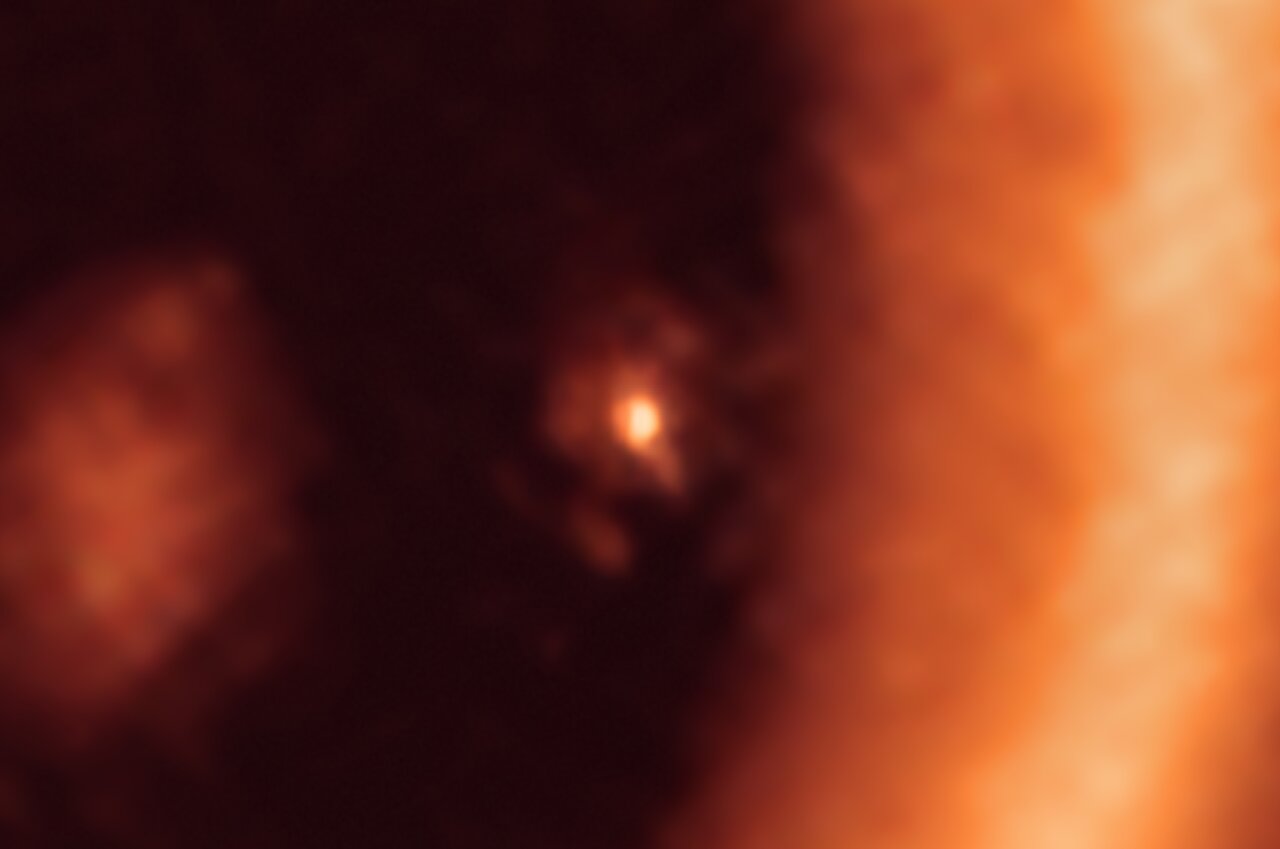Scientists have captured an unambiguous image of a moon-forming disc around an exoplanet, the first time such a thing has been imaged outside of our own solar system.
Using the Atacama Large Millimetre/submillimeter Array (ALMA), astronomers honed in on a still-forming solar system 400 light years away after earlier observations of the system determined that a pair of gas giants in the system – similar to our system's Jupiter-Saturn pairing – were still in the process of formation.
The new image taken with ALMA is the clearest yet of the system's circumstellar accretion disc and was sharp enough to detect the circumplanetary disc around PDS 70c – so sharp in fact that astronomers are able to determine its diameter and mass.
“Our work presents a clear detection of a disc in which satellites could be forming,” said Myriam Benisty, a researcher at the University of Grenoble, France, and at the University of Chile, who led the research published this week in The Astrophysical Journal Letters.
“Our ALMA observations were obtained at such exquisite resolution that we could clearly identify that the disc is associated with the planet and we are able to constrain its size for the first time.”
Despite the comparison to Jupiter and Saturn, the size of the moon-forming disc around PDS 70c is enormous, with a diameter comparable to the distance between the Earth and the Sun, or about 500 times larger than the rings of Saturn. The mass of the accretion disc is enough to create as many as three satellites the size of the Moon.



- Exploring the weird world of exoplanets
- Nasa discovers seven new exoplanets with great potential for alien life
- Inside the Project Blue mission to photograph 'sister Earth 2.0'

Analysis: getting to watch moons form in real time is a big deal
What makes this discovery so important for astronomers is that despite identifying more than 4,000 exoplanets in just the past decade and a half, these have all been found in mature systems where planet formation was essentially finished and any smaller ring systems like those around Saturn would be all but impossible to detect using current technology.
This means that everything we know – or think we know, to be more accurate – about moon formation has largely been based on what we've seen in our own solar system or through modeling, and both of these have a built-in bias.
When all you've seen is your own planetary neighborhood, it's easy to project that into the universe at large. For decades, it was assumed that gas giants existed on the outer edge of solar systems with the interior regions being the home of small, rocky planets.
This isn't what scientists found when they started looking at exoplanets for the first time, however. Instead, they found that so-called hot Jupiters – large gas giants comparable in size or larger than our Jupiter – are often found shockingly close to their host star with orbital periods measuring in mere days.
Something very similar could be the case with moon formation, where direct observation can upend a lot or even most of our assumptions about how natural satellites end up orbiting their host planets.
What's more, this discovery could also shed light on planetary formation as well. "These new observations are also extremely important to prove theories of planet formation that could not be tested until now," Jaehan Bae, a researcher with the Earth and Planets Laboratory of the Carnegie Institution for Science, USA, and study co-author, said.
- Stay up to date on all the latest tech news with the TechRadar newsletter
from TechRadar - All the latest technology news https://ift.tt/3kJE50W
No comments:
Post a Comment